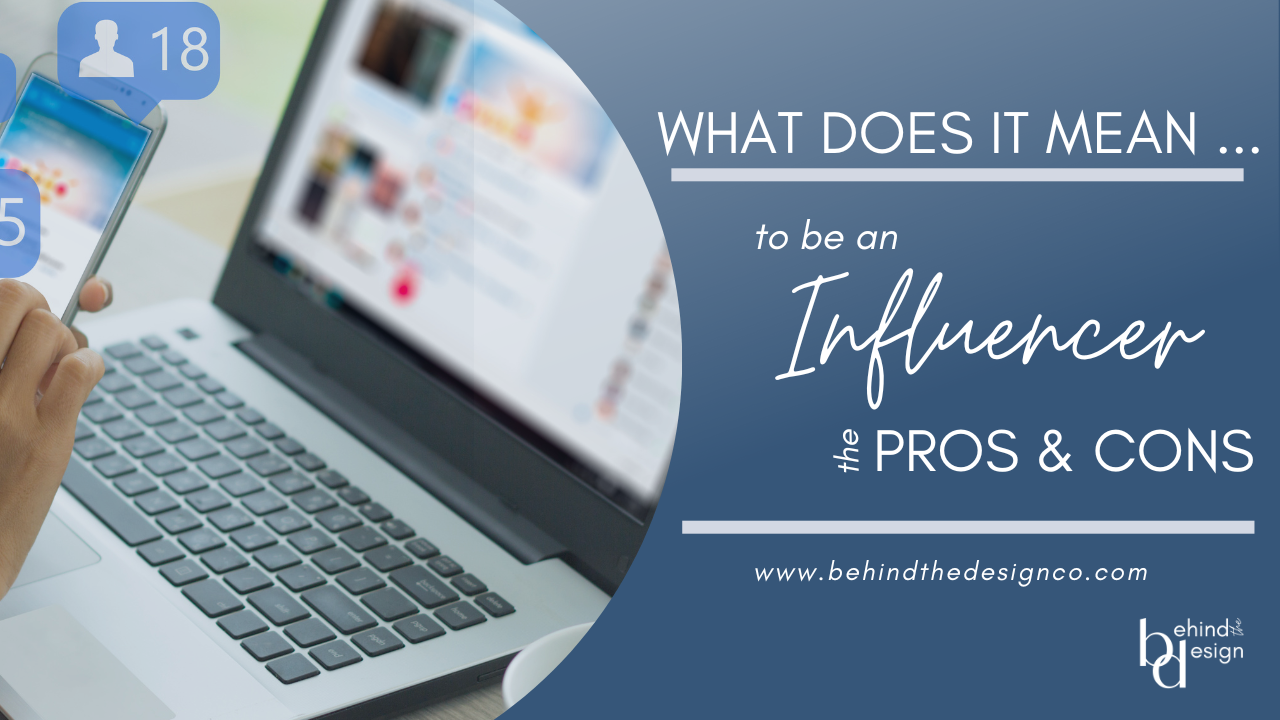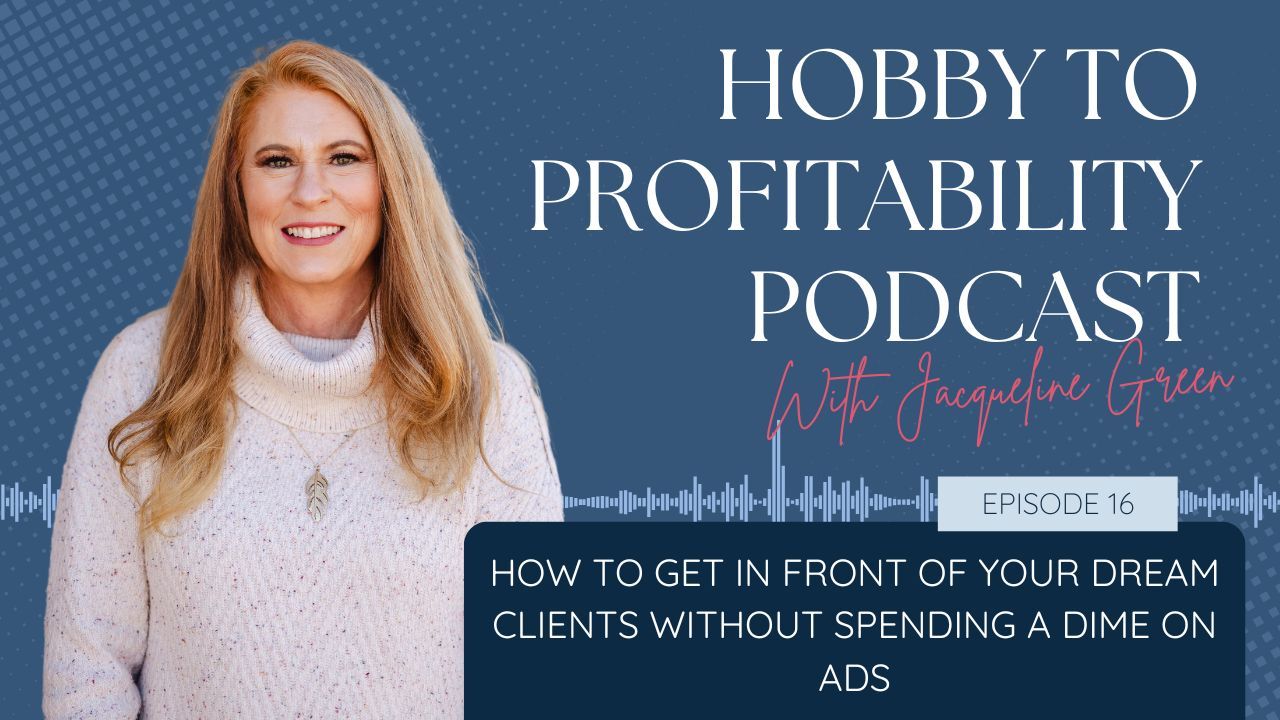What Does It Mean to Be an Influencer — Pros and Cons
Aug 16, 2023
What do you think of when you picture an influencer? You might imagine a young person promoting hair care and makeup products on TikTok. Or maybe you think of an Instagram model telling their followers to buy from a certain clothing company.
But did you know interior designers can be influencers, too? There’s no set definition of an influencer, but generally speaking, micro-influencers have at least 10,000 followers. So-called mega-influencers can have followings of 1 million or more!
Being an influencer isn’t just about getting validation on social media. It can help you build a personal brand, grow your audience, and generate more sales. Want to know how to be an influencer in the design world? Here’s a quick guide.
Branding: Why You Need It
In order to understand how becoming an influencer can help you as a designer, you first need to understand why branding is so important.
In short, branding is how your business makes customers feel. For example, if a customer goes into Walmart looking for living room furniture, they’re primarily looking for affordable prices. That’s because value and affordability are central to Walmart’s brand.
But if a customer instead shops for furniture at Design Within Reach, they’re looking for upscale, innovative furniture (with a much higher price tag!). Unique, boutique-style design is part of Design Within Reach’s brand.
In a similar vein, personal branding is an important part of being a successful designer. Your brand is how your customers perceive you. Are you detail-oriented? A great communicator? An artist who thinks outside the box?
If you have a clear personal brand, your unique attributes will be more likely to draw customers in. Once you have a clear idea of your brand, you can showcase — and build upon — that brand as an influencer.
The Pros of Becoming an Influencer
1. Developing Credibility and Authority
As you build a brand online and deliver helpful content to your followers, more people will see you as an expert. Even if you don’t reach mega-influencer status, having a successful online presence can help you win over more potential clients.
Imagine this example: A customer is trying to choose between two interior designers, so they search for both names. One designer has no online presence. The other has a professional-looking website and several active social media channels offering design tips and advice. Which one do you think the customer will choose?
2. Growing Your Pool of Potential Clients
If you become an influencer, you get a lot more exposure. Potential customers looking for a designer will be able to find you easily. And as an influencer, you gain access to another potential market — people who previously weren’t considering hiring a designer at all.
These people might scroll through your content (including photos and videos of your work) and decide that hiring a designer is worth the expense. And chances are good that you’re the designer they’ll hire!
3. Building a Professional Network
As influencers steadily become more successful, they often collaborate with other influencers. Collaborations can help build up your audience, and they can be a lot of fun, too.
For example, you might choose to work with another interior designer to create a video series. That collaboration might lead to future partnerships on design projects.
You could also choose to collaborate with someone in a similar field. For example, you might work with a local artist to design a room or two: You’d design the room, and the artist would paint all the wall art. You both may gain some new clients as a result!
4. Increasing Your Earnings
Some (though not most) influencers can earn a full-time living from their online work alone. Even if you can’t live off of your influencer earnings, you may be able to substantially supplement what you’re already making.
The Cons of Becoming an Influencer
Before you decide to take the plunge and become an interior design influencer, you need to know what you’re getting into. Here are some of the potential downsides you might want to consider:
1. There’s a Learning Curve
Unless you already have experience creating content for different social media platforms, you’ll need to take some time to learn.
For instance, if you’re creating a YouTube channel, you need to know how to film and edit videos. If you want to reach your audience through Facebook, you’ll need to know how to create posts that make people want to engage.
It’s also wise to learn what you can about each platform’s algorithm so you can maximize your reach. The exception here is TikTok — its algorithm largely remains a mystery, so influencers use trial and error to figure out what types of posts perform best.
2. It’s a Time Commitment
It takes time to build a social media presence. But even once you’ve established that presence, maintaining influencer status is an ongoing commitment. You will need to create a steady stream of new content, and you’ll also want to continue engaging with your online audience.
As your influencer role helps you gain more clients, it can take some effort to learn how to juggle both roles. It’s doable, but it can be a challenge!
3. Success Isn’t Guaranteed
Not everyone who sets out to become an influencer develops a following. There are strategies you can follow, but still, your success isn’t a given. It’s possible to invest significant time and effort to see only minimal returns.
How to Become an Influencer in the World of Interior Design
Building your brand as an influencer is about much more than gaining new followers. Here are a few ways to work toward becoming an influencer:
Set Yourself Apart From the Competition
No matter what field you’re in, you’ll always have competition. If you want to become an influencer, you need to find a niche and distinguish yourself from your competitors.
For example, if you’ve done a lot of design work in apartments, you might focus one or more of your social media channels on designing in small spaces.
Another way to distinguish yourself is to personalize your social media channels. Don’t be afraid to show your true self! You’ll draw in more subscribers if your website and social media channels showcase more than just photos and videos of your work.
Build a Presence Across Social Media Channels
If you want to maximize your chances of drawing in new clients, you also need to make sure you have a strong presence on more than one social media channel. You don’t need to be on every single one, but being active on different platforms increases your reach.
For fashion and design influencers, Instagram seems to be the platform of choice. Because Instagram is so centered around photos, it offers you the opportunity to draw in new followers with photos of your work.
YouTube is ideal for how-to videos and other video-based content. TikTok is useful for short videos, although it’s primarily used by Generation Z. And if you’re witty, you might pull in a few more followers on Twitter, too.
Create Valuable, Engaging Content
You need a content strategy to become a successful influencer. But while you’re setting up different channels and scheduling posts, don’t forget the most important thing: the content itself.
Quality is important here, and not just the quality of your work. You may have done a spectacular job designing the interior of a home, but if you take a poorly lit video with a low-quality camera, your audience probably won’t be too interested.
You also want to make sure your content adds value to your audience’s lives. Sometimes, a striking photo of an interior can be beautiful enough to brighten someone’s day. Simple design tutorials can also be helpful.
It’s easy to connect your different types of content — for example, interior design influencer Emily Henderson will sometimes post a picture of an interior and invite viewers to click a link to see the making-of video.
Take the Time to Communicate With Your Audience
Many influencers became successful because they built a community around their chosen niche. One of the benefits of social media over a website is that it lets you easily communicate with your audience.
Taking a little time each day to react and reply to comments shows followers that you’re invested, and it gives your brand a personalized touch. If people feel like they’re getting to know you through your content, they’re more likely to reach out to you when they need to hire a designer.
Make Sure You Have a Website
Social media channels are great for drawing more people to your brand. But if you want those people to become paying customers, you need your social media to direct them somewhere else. Usually, the best choice is to direct them to your website.
Having a professional, easy-to-navigate website is essential. For one, it allows visitors to learn more about you and discover your brand story. They can also view your work and book consultations.
Your website also offers you an opportunity for content marketing. If you have an active design blog and optimize your posts for search engines, you’re likely to get a high search engine results page (SERP) ranking. That means more people clicking over to your site!
Of course, you want to make sure your website content is good enough to keep your visitors there. A great way to do that is to make your blog helpful, engaging, and informative. If visitors can learn something from you, they’re more likely to come back.
Network and Collaborate With Other Influencers
Working with other influencers can help boost your audience. But if you’ve never collaborated before, the process can be a little nerve-racking. All you need to do is reach out to another influencer with an idea for a joint project.
It’s best to contact an influencer with slightly more reach than you have. If you’re just starting out, a design influencer with a million followers will likely ignore your request to collaborate. But if you have 1,000 followers, you might find success contacting an influencer with around 2,500.
Reach New Heights With a Brand Identity
If you’re hoping to become an interior design influencer, the first step is identifying and cultivating your brand identity. This foundational process can be harder than it sounds.
With Build Your Brand Identity Beyond Logos, our continuing education unit (CEU) course, you’ll learn how to use branding to create and grow a business online and beyond. Want to see what you can achieve? Preregister today!
Sign Up for Our Monthly Newsletter
Get helpful career, business, and design tips right in your inbox each month.
At Behind the Design, we are committed to building a stronger design community by reimagining education, training, and support for interior designers. Through our various software training options, educational articles covering everything from leadership to marketing, and soon Continuing educational courses, we are committed to helping you. Join our newsletter to get the latest education and training updates.









